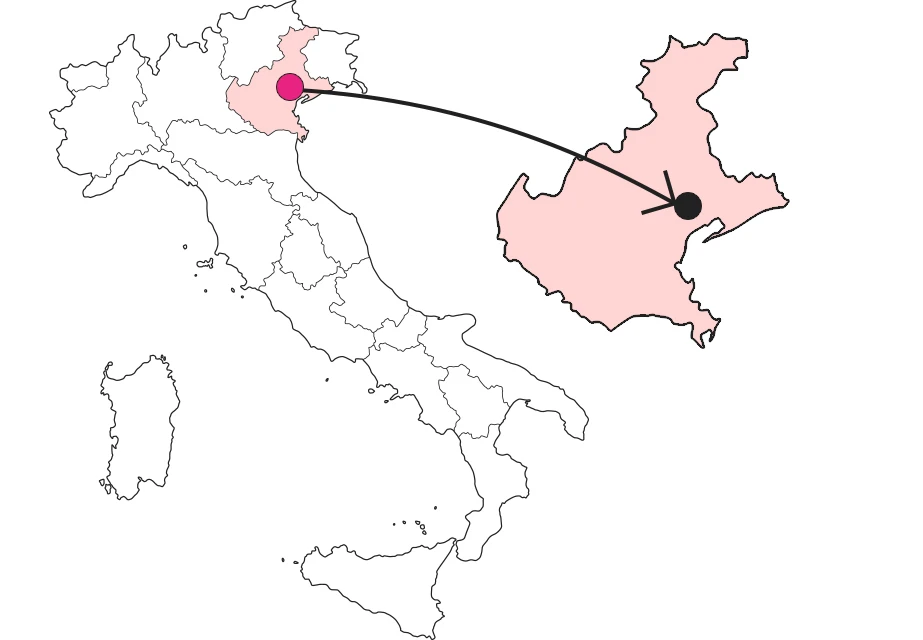SHARRYLAND


Where is

What it is and where it is
St. Lucy's Church is a dark and colorful Gothic treasure chest that over the centuries has found a space of its own behind Treviso's square, abutting the church of San Vito at the foundations of Monte di Pietà. To enter it, you have to know it's there: the brown brick facade is low and the eye is distracted by the airy portico on the right or the Civic Tower soaring beyond the second floor. At the top, the saint has begged the hint of a cross and the hint of two sloping roofs. One must be intrigued and enter.
Why it is special
Many years ago, the great historian Luigi Coletti had written that "the thickening of the columns" short supporting a square vault, the latent light in these spaces accessed by small doors, give the impression of being in a crypt, rather than in a church. As if upon entering one had forgotten that one had left a town square. Inside, the bays vary in size, seeming to fit together at best, but the space reserved for the priests was not given up, with a balustrade crowned by the busts of martyrs. In medieval churches one made do as one could, but everyone had his own place. Here, under a beautiful sky painted with stars.
Not to be missed
There is no shortage of carved and frescoed decorations in this church, albeit small. The Stories of St. James the Greater, St. Christopher and St. Anthony Abbot are beautiful, to be deciphered and reconnected on the somewhat scattered vaults. But the real masterpiece is not on the high altar or the noble walls. Just inside, on the right is the little chapel of the Crucifixion. There gazes a less-than-divine Madonna (who may not be "forest" to the taverns that crowd the streets around), who holds an awkward Child, leaning toward a butterfly, the "Pavejo" that gives the painting its name. At the two high corners, however, two angels gracefully hold up the backdrop. Making yourself near one is certain to have found the work by Tomaso da Modena that the little church of Santa Lucia preserves. Not much of the great 14th-century master has been saved, but these scraps of painting are worth a search in the half-light.
A bit of history
Tomaso is credited with the composition of the scenes painted in this chapel, but his is the hand in the angels alone. They certainly did not delight in attribution discussions among the inmates who saw the work in centuries past. Yes, because the church of St. Lucy owes its flimsy layout to the architects who took a turn at this corner of the square where the city jail once stood. This caught fire in 1354, but the following year it enjoyed the company of Santa Maria de Carceribus (with its frescoes on the street). Then the Palazzo Pubblico, overlooking the Piazza dei Signori, extended with a portico over San Vito next door, and over our little church. As the Trevisans returned under the wing of the Most Serene Lion on January 13, 1389, under the leadership of Mark Zen, the consecrated spaces left over from the architectural turmoil were named after the Syracusan martyr saint celebrated on that day.
Trivia
Behind the door by which St. Lucy communicates with St. Vitus is ... a surprise. You have to go and see it!
Enter the Map of Italy's Undiscovered Wonders and find treasures where you least expect it... Inspire, Recommend, Share...
Contact
Collections
The Map thanks:
Enter the Map of Italy's Undiscovered Wonders and find treasures where you least expect it... Inspire, Recommend, Share...
Where is

Contact
Collections


